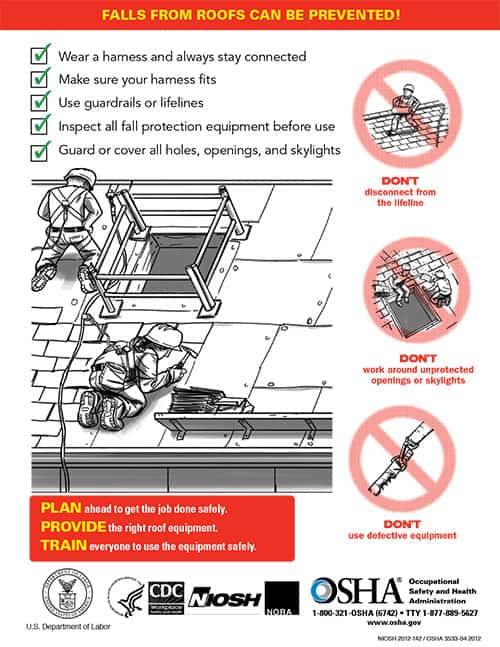Hidden Hazards: The True Cost of Falling Objects vs. Human Falls at Work
Workplace safety remains a critical concern, especially in industries like construction where hazards are prevalent. Two common sources of injuries are falling objects and human falls. This blog delves into the data reports to compare the frequency and impact of these incidents.

Falling Objects: A Persistent Threat
Statistics and Impact
Falling objects pose a significant risk across various industries. According to the U.S. Bureau of Labor Statistics (BLS), being struck by falling objects or equipment resulted in numerous injuries and fatalities. In 2019, there were 241 fatal injuries due to being struck by falling objects, making it one of the leading causes of workplace deaths (Occupational Health & Safety).
The construction industry, in particular, sees a high number of these incidents. Tools, equipment, and materials falling from heights are common culprits. Non-fatal injuries are also prevalent, often leading to serious outcomes that require days away from work. The BLS reported that "struck by object or equipment" incidents accounted for a substantial portion of non-fatal injuries involving days away from work (Find Best Law Jobs in the US in 2024).
Human Falls: Leading Cause of Fatalities
Statistics and Impact
Falls from heights are a leading cause of workplace fatalities, especially in construction. OSHA data reveals that falls accounted for 401 out of 1,102 total fatalities in construction in 2019, approximately 36.4% of all construction deaths (CDC Blogs). These incidents often occur from ladders, scaffolding, and roofs.
Non-fatal falls are also a major concern. The BLS reports that in 2019, falls to a lower level accounted for 15% of all non-fatal injuries involving days away from work (Find Best Law Jobs in the US in 2024). These incidents can result in severe injuries, including fractures, head injuries, and long-term disabilities.
Comparison: Frequency and Severity
Frequency
- Falling Objects: Incidents involving falling objects are frequent and occur in various settings, from construction sites to manufacturing plants. They are a significant cause of both fatal and non-fatal injuries.
- Human Falls: Falls, particularly from heights, are less frequent than falling objects but have a higher fatality rate. In construction, they are the leading cause of death.
Severity
- Falling Objects: Injuries from falling objects can range from minor cuts and bruises to severe head injuries and fatalities, depending on the object's weight and height from which it falls.
- Human Falls: Falls often result in severe injuries or fatalities. The impact of a fall from height is typically more severe than that of a falling object, leading to serious consequences such as spinal injuries and multiple fractures.
Prevention Measures
Falling Objects
- Safety Helmets: Ensuring all workers wear appropriate head protection.
- Secure Tools and Materials: Implementing measures to secure tools and materials at heights.
- Barricades and Netting: Using barricades and safety netting to catch falling objects.
Human Falls
- Fall Protection Systems: Utilizing harnesses, guardrails, and safety nets.
- Training: Providing comprehensive training on fall prevention and proper use of equipment.
- Routine Inspections: Regularly inspecting work sites for potential fall hazards.
Both falling objects and human falls present significant risks in the workplace. While falling objects result in a higher number of non-fatal injuries, falls from heights are more likely to be fatal. Preventive measures, tailored to address the specific risks of each type of incident, are crucial in reducing these workplace hazards.
For more detailed statistics and information, you can refer to the latest reports from the BLS and OSHA websites (Occupational Health & Safety) (Find Best Law Jobs in the US in 2024) (CDC Blogs).
References:
- U.S. Bureau of Labor Statistics (BLS). "Occupational Injuries and Illnesses and Fatal Injuries Profiles." BLS Website.
- Occupational Safety and Health Administration (OSHA). "Commonly Used Statistics." OSHA Website.
- Centers for Disease Control and Prevention (CDC). "Preventing Struck-by Injuries in Construction." CDC Blog.











